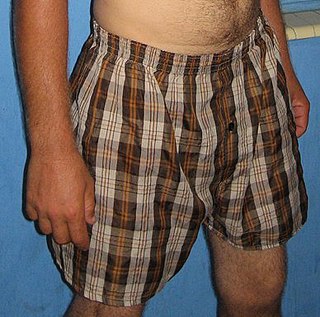Related Research Articles
A boy is a young male human. The term is commonly used for a child or an adolescent. When a male human reaches adulthood, he is usually described as a man.
Phalloplasty is the construction or reconstruction of a penis or the artificial modification of the penis by surgery. The term is also occasionally used to refer to penis enlargement.

A trans man is a man who was assigned female at birth. Trans men have a male gender identity, and many trans men undergo medical and social transition to alter their appearance in a way that aligns with their gender identity or alleviates gender dysphoria.
Gender-affirming surgery for female-to-male transgender people includes a variety of surgical procedures that alter anatomical traits to provide physical traits more comfortable to the trans man's male identity and functioning.
Gender-affirming surgery for male-to-female transgender women or transfeminine non-binary people describes a variety of surgical procedures that alter the body to provide physical traits more comfortable and affirming to an individual's gender identity and overall functioning.

Boxer shorts are a type of undergarment typically worn by men. The term has been used in English since 1944 for all-around-elastic shorts, so named after the shorts worn by boxers, for whom unhindered leg movement ("footwork") is very important. Boxers come in a variety of styles and design but are characterized by their loose fit.
Boxer briefs are a hybrid type of men's undergarment which are long in the leg, similar to boxer shorts, but tight-fitting like briefs. They emerged as a style in the 1990s and are commonly worn for sports and as every-day underwear.

Scrotoplasty, also known as oscheoplasty, is a type of surgery to create or repair the scrotum. The history of male genital plastic surgery is rooted in many cultures and dates back to ancient times. However, scientific research for male genital plastic surgery such as scrotoplasty began to develop in the early 1900s. The development of testicular implants began in 1940 made from materials outside of what is used today. Today, testicular implants are created from saline or gel filled silicone rubber. There are a variety of reasons why scrotoplasty is done. Some transgender men and intersex or non-binary people who were assigned female at birth may choose to have this surgery to create a scrotum, as part of their transition. Other reasons for this procedure include addressing issues with the scrotum due to birth defects, aging, or medical conditions such as infection. For newborn males with penoscrotal defects such as webbed penis, a condition in which the penile shaft is attached to the scrotum, scrotoplasty can be performed to restore normal appearance and function. For older male adults, the scrotum may extend with age. Scrotoplasty or scrotal lift can be performed to remove the loose, excess skin. Scrotoplasty can also be performed for males who undergo infection, necrosis, traumatic injury of the scrotum.
The gender binary is the classification of gender into two distinct forms of masculine and feminine, whether by social system, cultural belief, or both simultaneously. Most cultures use a gender binary, having two genders.
In the context of gender, passing is when someone is perceived as a gender they identify as or are attempting to be seen as, rather than their sex assigned at birth. Historically, this was common among women who served in occupations where women were prohibited, such as in combat roles in the military. For transgender people, it is when the person is perceived as cisgender instead of the sex they were assigned at birth. The person may, for example, be a transgender man who is perceived as a cisgender man.
Packing is wearing padding or a phallic object in the front of the pants or underwear to give the appearance of having a penis or bulge. Packing is commonly practiced by trans men. People who cross-dress as male may also "pack".

A waistband is a strip of material that is either elastic or some other confining fabric that encircles the waist, usually as a component of clothing such as skirts, trousers, shorts, swimsuits, and undergarments.

Briefs are a type of short, form-fitting underwear and swimwear, as opposed to styles where material extends down the thighs. Briefs have various different styles, usually with a waistband attached to fabric that runs along the pelvis to the crotch and buttocks, and are worn by both men and women. Swim briefs are a variation used as swimwear.

In human anatomy, the penis is an external male sex organ that additionally serves as the urinary duct. The main parts are the root, body, the epithelium of the penis including the shaft skin, and the foreskin covering the glans. The body of the penis is made up of three columns of tissue: two corpora cavernosa on the dorsal side and corpus spongiosum between them on the ventral side. The human male urethra passes through the prostate gland, where it is joined by the ejaculatory duct, and then through the penis. The urethra traverses the corpus spongiosum, and its opening, the meatus, lies on the tip of the glans. It is a passage both for urination and ejaculation of semen.

A gaff is a piece of fabric, usually augmented by an elastic such as a rubber band, that is designed to hide a penile bulge. It is usually worn by trans women or male cross-dressers. Since the 2010s, underwear manufacturers have begun to design underwear with the same function as gaffs. Home-made gaffs are often made by cutting the ends off a single sock, then placing a pair of elastic loops through them. The main function of gaffs is to hide a crotch bulge and make the groin appear smoother and flatter.

An erection is a physiological phenomenon in which the penis becomes firm, engorged, and enlarged. Penile erection is the result of a complex interaction of psychological, neural, vascular, and endocrine factors, and is often associated with sexual arousal, sexual attraction or libido, although erections can also be spontaneous. The shape, angle, and direction of an erection vary considerably between humans.

Human penises vary in size on a number of measures, including length and circumference when flaccid and erect. Besides the natural variability of human penises in general, there are factors that lead to minor variations in a particular male, such as the level of arousal, time of day, ambient temperature, anxiety level, physical activity, and frequency of sexual activity. Compared to other primates, including large examples such as the gorilla, the human penis is thickest, both in absolute terms and relative to the rest of the body. Most human penis growth occurs in two stages: the first between infancy and the age of five; and then between about one year after the onset of puberty and, at the latest, approximately 17 years of age.

Orchiectomy is a surgical procedure in which one or both testicles are removed. The surgery can be performed for various reasons:

Lesbian, gay, bisexual, and transgender people people wishing to have children may use assisted reproductive technology. In recent decades, developmental biologists have been researching and developing techniques to facilitate same-sex reproduction.
Cisnormativity or cissexual assumption is the assumption that everyone is, or ought to be, cisgender. The term can further refer to a wider range of presumptions about gender assignment, such as the presumption of a gender binary, or expectations of conformity to gender roles even when transgender identities are otherwise acknowledged. Cisnormativity is a form of cisgenderism, an ideology which promotes various normative ideas about gender, to the invalidation of individuals' own gender identities, analogous to heterosexism or ableism.
References
- ↑ Trussler, James T.; Carrasquillo, Robert J. (2020). "Cryptozoospermia Associated With Genital Tucking Behavior in a Transwoman". Reviews in Urology. 22 (4): 170–173. PMC 8058914 . PMID 33927575.
- ↑ Pyne, Jake (2011). "UNSUITABLE BODIES: Trans People and Cisnormativity in Shelter Services". Canadian Social Work Review. 28 (1): 129–137. JSTOR 41658838.
- ↑ Filippo, Maria San (2 July 2016). "Female Trouble: Representing Transwomen in The Danish Girl and The New Girlfriend". Journal of Bisexuality. 16 (3): 403–407. doi:10.1080/15299716.2016.1199843.
- ↑ Conard, L.E. (June 2017). "Supporting and caring for transgender and gender nonconforming youth in the urology practice". Journal of Pediatric Urology. 13 (3): 300–304. doi:10.1016/j.jpurol.2017.02.019. PMID 28645619.
- ↑ "Penis - methods of concealment and obtaining a 'flat-look' for pre-op male-to-female transgender people Archived 8 January 2018 at the Wayback Machine ", Samantha Johnson, Transgender Zone
- ↑ Willson, Jacki; McCartney, Nicola (June 2017). "A look at 'fishy drag' and androgynous fashion: Exploring the border spaces beyond gender-normative deviance for the straight, cisgendered woman" (PDF). Critical Studies in Fashion & Beauty. 8 (1): 99–122. doi:10.1386/csfb.8.1.99_1.
- ↑ Phillips, Harry. "New erection-hiding underwear unveiled". Health24. Archived from the original on 19 July 2022.
- ↑ Shawver, Lois (1996). "Sexual Modesty, the Etiquette of Disregard, and the Question of Gays and Lesbians in the Military". In Herek, Gregory M.; Jobe, Jared B.; Carney, Ralph M. (eds.). Out in Force: Sexual Orientation and the Military. University of Chicago Press. pp. 226–44. ISBN 978-0-226-40048-8.
- ↑ "10 Weird Things About Having an Erection, According to Guys, Because You Can Wiggle It". 9 June 2015. Archived from the original on 8 January 2018. Retrieved 8 January 2018.
- ↑ "The World's Most Dependable Boner-Hiding Technique Failed This Man in Spectacular Fashion". 21 November 2014. Archived from the original on 8 January 2018. Retrieved 8 January 2018.
- ↑ "These New Boxers Will Hide Your Untimely Erection". 15 July 2015. Archived from the original on 25 February 2021. Retrieved 8 January 2018.
- ↑ Lever, Janet; Frederick, David A.; Peplau, Letitia Anne (July 2006). "Does size matter? Men's and women's views on penis size across the lifespan". Psychology of Men & Masculinity. 7 (3): 129–143. doi:10.1037/1524-9220.7.3.129.
- ↑ Blanco F., José (March 2014). "Revealing myself: A phenomenological approach to my underwear choices through the years". Critical Studies in Men's Fashion. 1 (2): 117–131. doi:10.1386/csmf.1.2.117_1.
- ↑ "Bloxers Claim To Be The New Boxers That Will Conceal Your Boners". HuffPost UK . 14 July 2015. Archived from the original on 18 July 2022.
- ↑ dickey, lore m.; Ducheny, Kelly M.; Ehrbar, Randall D. (June 2016). "Family creation options for transgender and gender nonconforming people". Psychology of Sexual Orientation and Gender Diversity. 3 (2): 173–179. doi:10.1037/sgd0000178.
- ↑ de Nie, Iris; Asseler, Joyce; Meißner, Andreas; Voorn-de Warem, Ilona A. C.; Kostelijk, E. Hanna; den Heijer, Martin; Huirne, Judith; van Mello, Norah M. (March 2022). "A cohort study on factors impairing semen quality in transgender women". American Journal of Obstetrics and Gynecology. 226 (3): 390.e1–390.e10. doi: 10.1016/j.ajog.2021.10.020 . PMID 34688596. S2CID 239532503.
- ↑ Debarbo, Clarence Joy M. (November 2020). "Rare cause of testicular torsion in a transwoman: A case report". Urology Case Reports. 33: 101422. doi:10.1016/j.eucr.2020.101422. PMC 7574273 . PMID 33102119.